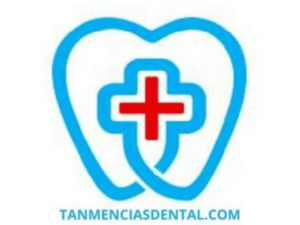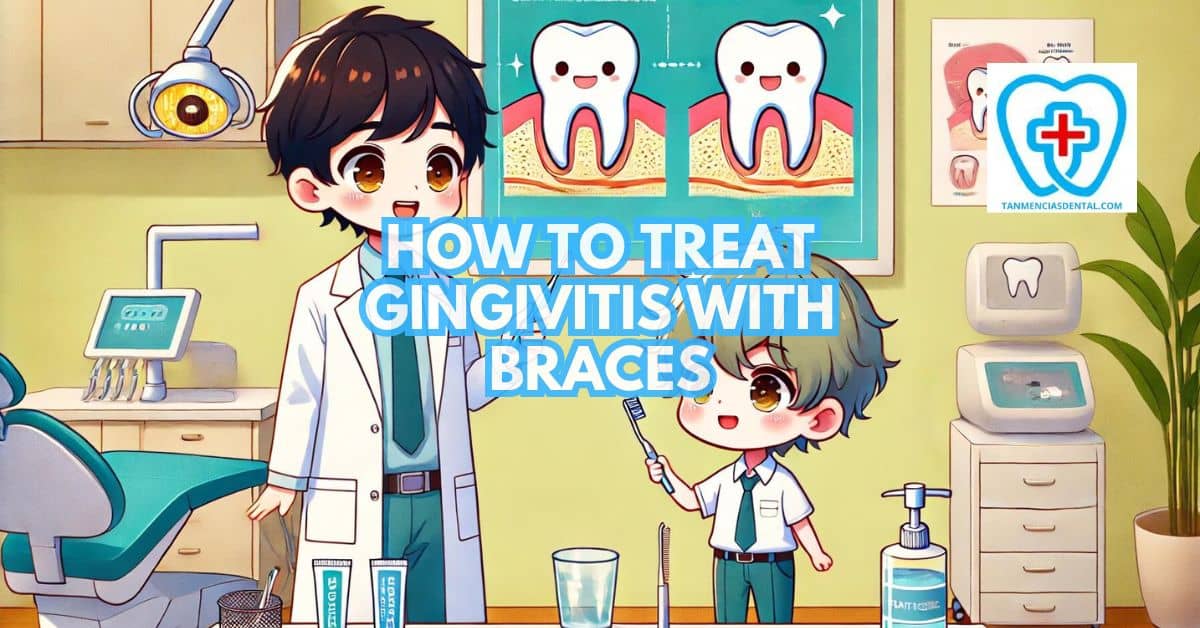Gingivitis is a common gum disease characterized by inflammation, redness, and bleeding of the gums.
This condition is particularly prevalent in individuals with braces due to the challenges in maintaining oral hygiene.
Braces can make it harder to clean teeth effectively, increasing the risk of plaque buildup, which is the primary cause of gingivitis.
It is essential to recognize the symptoms of gingivitis early to prevent it from progressing into more severe gum diseases.
We’ll explore effective ways to treat gingivitis with braces and maintain healthy gums during orthodontic treatment.
1. What is Gingivitis?
Gingivitis is the initial stage of gum disease, caused primarily by the accumulation of plaque—a sticky film of bacteria—on the teeth and gums.
The presence of this bacteria leads to inflammation and infection of the gum tissue, resulting in swollen, tender gums that bleed easily during brushing or flossing.
Unlike more severe gum diseases, gingivitis is reversible with proper oral care and treatment.
If ignored, however, it can progress to periodontitis, a more serious condition that can cause tooth loss.
Understanding what gingivitis is and recognizing its symptoms are crucial steps in preventing its progression and ensuring optimal oral health.
🦷 Dental Care for Braces: Safety Precautions and Best Practices
2. Braces: A Breeding Ground for Bacteria?
Braces consist of brackets, wires, and bands that create additional surfaces and spaces in the mouth where food particles and plaque can accumulate.
These appliances can make it challenging to clean teeth and gums thoroughly, increasing the risk of bacterial growth and gingivitis.
Poor oral hygiene with braces often leads to more plaque buildup, providing an ideal environment for bacteria to thrive.
This makes maintaining good oral hygiene practices essential to prevent gingivitis and other oral health issues.
Regular cleaning and proper care are crucial in minimizing the risk of bacterial growth and maintaining healthy gums while wearing braces.
🦷 Tips for a Stress-Free Dental Checkup
3. Master Your Oral Hygiene Routine
Maintaining a consistent oral hygiene routine is vital to preventing gingivitis when you have braces.
Start by brushing your teeth at least twice a day using a soft-bristled toothbrush and fluoride toothpaste, making sure to clean all surfaces of the teeth and braces.
Flossing daily is equally important; using orthodontic floss or a floss threader can help you reach between the wires and remove plaque from between your teeth and around the braces.
Additionally, consider using an antimicrobial mouthwash to further reduce bacteria and plaque buildup.
Mastering these daily habits will help you keep your gums healthy and reduce the risk of developing gingivitis during orthodontic treatment.
🦷 What Is the Best Way to Brush Your Teeth with Braces?
4. The Importance of Regular Dental Checkups
Regular dental checkups are essential for maintaining oral health, especially when you have braces.
During these visits, your dentist can thoroughly clean your teeth and gums, removing plaque and tartar that are difficult to eliminate with regular brushing and flossing.
They can also assess the health of your gums and identify early signs of gingivitis or other dental issues, allowing for timely intervention.
Routine checkups provide an opportunity for your dentist to offer personalized advice and recommendations for maintaining oral hygiene with braces.
Scheduling appointments every six months, or as recommended by your dentist, is crucial for preventing gingivitis and ensuring a healthy smile.
🦷 Discover Nature’s Cure: Surprising Natural Ways to Treat Gingivitis
5. Reach Those Hard-to-Reach Places
Cleaning around braces can be challenging, as food particles and plaque can easily become trapped in hard-to-reach areas.
To effectively clean these areas, consider using interdental brushes, which are small brushes designed to fit between teeth and braces.
Water flossers are also helpful tools that use a stream of pulsating water to remove debris and plaque from between teeth and under braces.
These tools can supplement regular brushing and flossing, ensuring a more thorough clean.
By reaching those difficult spots, you can significantly reduce the risk of gingivitis and maintain healthier gums throughout your orthodontic treatment.
🦷 Dangers of Electric Toothbrushes: Are They Worth the Hype?
6. Fuel Your Gums with the Right Foods
A balanced diet plays a crucial role in supporting gum health during orthodontic treatment.
Consuming foods rich in vitamins and minerals, such as fruits and vegetables, can strengthen gums and enhance their ability to fight off infections.
Vitamin C, found in citrus fruits and leafy greens, is particularly beneficial for reducing inflammation and promoting gum healing.
Avoiding sugary and acidic foods and drinks can also help prevent plaque buildup and gum irritation.
By fueling your body with nutritious foods, you support your oral health and improve your resistance to gingivitis.
🦷 Special Needs And Dental Checkups
7. Over-the-Counter Relief for Gingivitis
Several over-the-counter products can help manage and alleviate gingivitis symptoms.
Antibacterial mouthwashes containing chlorhexidine or essential oils can reduce plaque and gingival inflammation, making them effective tools for managing gingivitis.
Additionally, toothpaste designed for gum health often contains active ingredients like fluoride and triclosan, which can help reduce plaque formation.
These products can be used as part of your daily oral hygiene routine to enhance gum health and combat gingivitis.
However, while these treatments can be effective in managing mild gingivitis, they should be used in conjunction with good oral hygiene practices for the best results.
🦷 Dangers of Not Brushing Your Teeth: More Than Just Bad Breath
8. When to Seek Professional Help
While mild gingivitis can often be managed with good oral hygiene and over-the-counter products, there are times when professional help is necessary.
If you experience persistent symptoms such as swollen, painful gums, or frequent bleeding despite maintaining a good oral care routine, it is important to consult your dentist or orthodontist.
These professionals can provide treatments such as deep cleaning or prescribe medicated mouthwashes to address more severe cases.
Ignoring persistent symptoms can lead to more serious gum diseases like periodontitis, which can result in tooth loss.
Early intervention is crucial to prevent further complications and maintain oral health.
🦷 What is a Good Alternative to Toothbrush for Maintaining Oral Hygiene?
9. Gingivitis Myths Debunked
There are several myths about gingivitis, especially concerning those with braces.
One common misconception is that gingivitis is inevitable with braces, but it can be prevented with proper care and hygiene.
Another myth is that bleeding gums are normal with braces, but this is a sign of gingivitis and should be addressed promptly.
Some people believe that flossing is unnecessary with braces, but it is essential for removing plaque and preventing gum disease.
Debunking these myths and understanding the facts can help you take the necessary steps to maintain healthy gums throughout your orthodontic treatment.
🦷 Can You Brush Your Teeth With Dentures In?
10. A Lifetime of Healthy Gums
Caring for your gums during orthodontic treatment is a valuable habit that extends beyond the time you wear braces.
By establishing a consistent oral hygiene routine, you lay the foundation for long-term gum health and overall oral wellness.
The habits you develop, such as regular brushing, flossing, and dental checkups, will continue to benefit you even after your braces are removed.
Maintaining healthy gums not only enhances your smile but also contributes to your overall well-being.
Embracing these practices ensures a lifetime of healthy gums and a beautiful smile.
🦷 How Long to Wait After Brushing Teeth to Use White Strips?
👨⚕️ Conclusion
Achieving healthy gums while wearing braces is possible with dedication and the right approach.
By understanding how to treat gingivitis with braces, you can protect your gums and enhance your orthodontic experience.
Consistent oral hygiene, regular dental checkups, and proper nutrition are key components of maintaining gum health.
With the right care and professional guidance, you can enjoy a healthy smile throughout your orthodontic journey and beyond.
Prioritizing gum health ensures that your smile remains beautiful and strong for years to come.
😊 Self-Promotion
At Tan-Mencias Dental Clinic in Parang, Marikina City, we’re dedicated to providing top-notch dental care in a welcoming and friendly environment.
Our skilled team is here to help you achieve a healthy and beautiful smile with personalized treatment plans tailored to your needs.
For any questions or concerns, feel free to reach out to us via our Facebook page, our website’s contact form, or call us directly at 09171451074.
We’re always ready to assist you with a smile.
Visit us today and experience exceptional dental care that puts you first!

